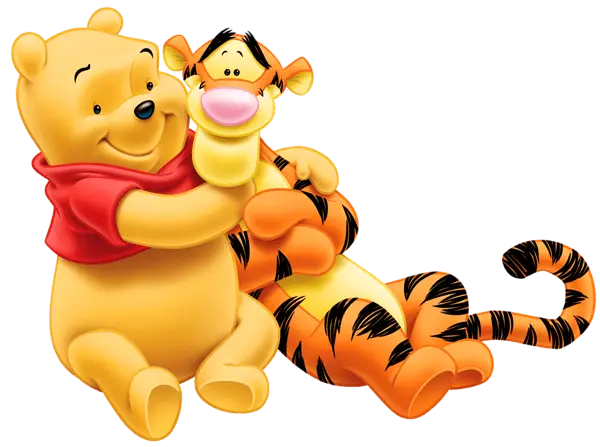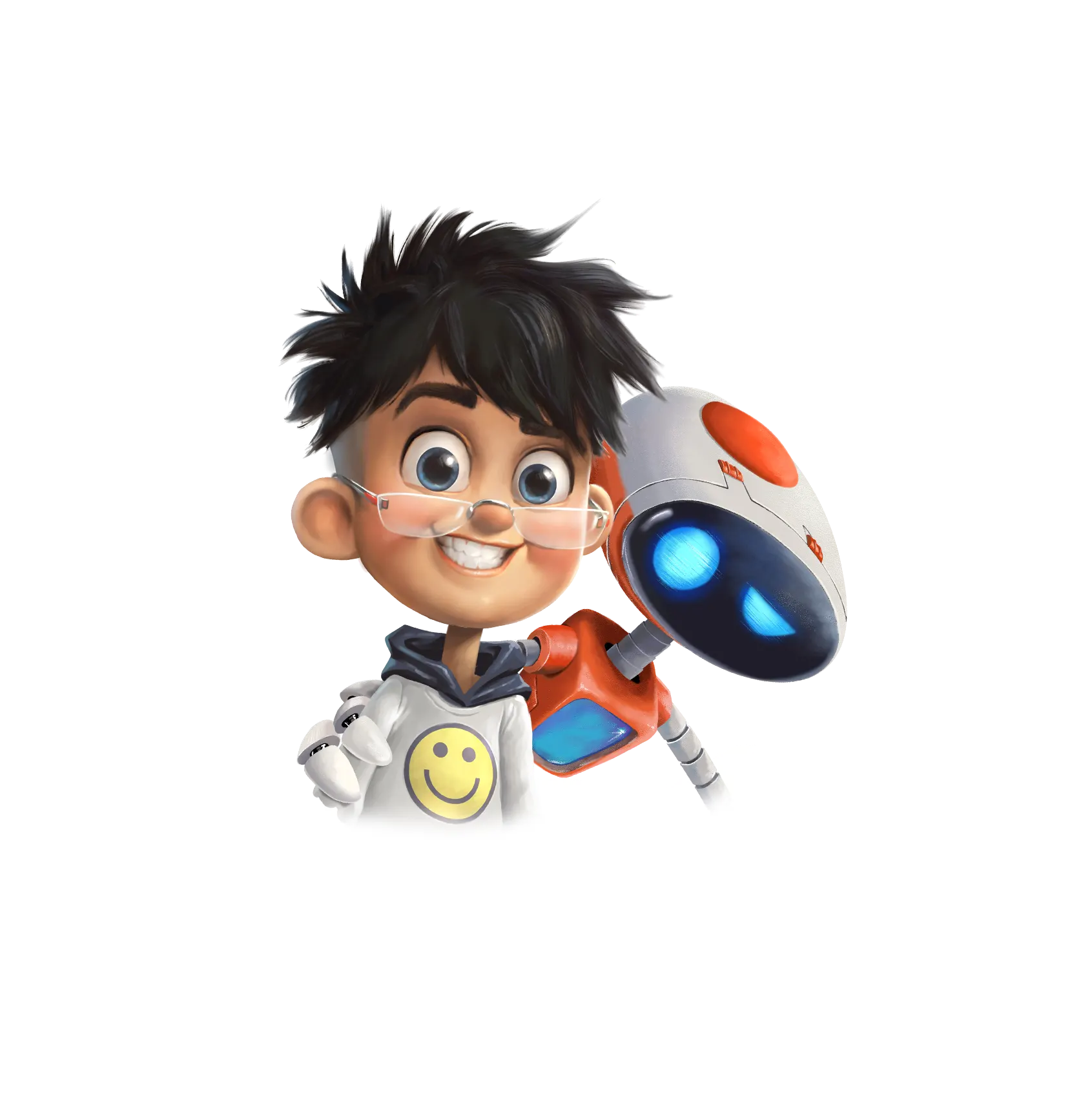Animation Foundation: Drawing Cartoon Characters
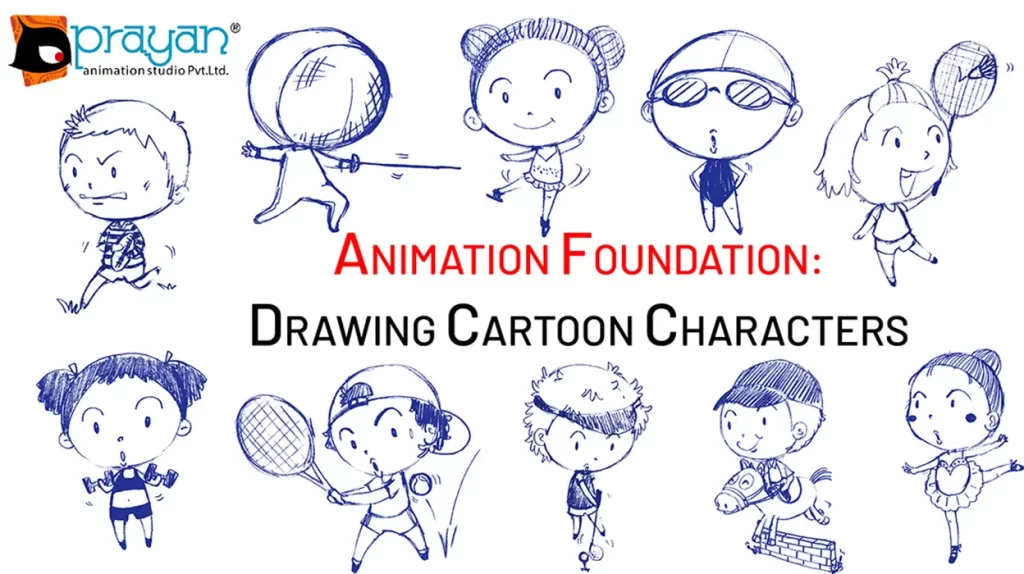
While some might still see animation as an industry, particularly for a younger auditorium, animated video content becomes a powerful tool for storytelling, branding, and marketing. Animation studios are even more popular and recognizable than most modern Hollywood celebrities and their products often go into the history of art and culture.
No matter, whether the animation is used to create a full-length feature movie or a short commercial clip, there are certain ground rules and principles. Creating and drawing a character is the key to success – the process that will determine the whole mood and atmosphere of the upcoming animated videos.
While cartoon artists need all the basic knowledge of anatomy and proportions, this knowledge will appear to be incomplete and even useless once they get down to the creation of a cartoon character. Mainly because cartoon characters exist in a separate Universe, which is also a product of the imagination and the creation of an artist.
Eventually, an artist has to create a character, that will be plausible and realistic in the eye of a viewer who sees the general picture – the character and the world where the character lives with its laws of physics, landscape, and atmosphere.
Where do you start?
In this article, we shall describe the fundamental principles of drawing different parts of a character and combining them into one image. However, it does not matter, whether you are drawing the body of your character, his eyes, mouth, or ears, the process always starts at the same point – rough sketches.
From this perspective drawing, cartoon characters may look a bit like sculpting. Rumors have it that Michelangelo once said that by creating his world-famous statue he just took a big chunk of marble and chipped away everything that didn`t look like David. Drawing a character or any part through a rough sketch is a similar process. You start with a simple geometric figure and then start to add certain features that will help this rough geometric figure look like the final character.
It is important to understand that this stage is essential, whether you are creating a human, animal, object, or any particular body part or landscape element.
You may have to make several sketches until you come up with a final concept. Through drawing several sketches you start to see how the character or object can move, express him, and what are the proportions and mimics of the final concept.
Basic principles of cartoon proportions
While every cartoon character is unique and the whole beauty of animation is that it does not have to follow the limitations of real life, certain principles determine the proportions of cartoon characters and even the scenery.
Those principles are usually determined by the local culture, perception of the human body, and beauty standards. We all know the distinctive feature of Asian animation – the exaggerated eyes and various hair colors. At the same time, western animation also exploits certain stereotypes that determine the proportions of heroes, no matter which studio or artist is working on the projects.
The basic principles of cartoon proportions are:
- Children often have heads larger than the rest of the body measurements and adult-size eyes.
- A hero usually has rounder facial and body features, while villains are often edgy and pointy.
- Eyes and mouth express the character, his mood, intelligence, and vibe.
- Male and female characters who are put in the middle of storytelling often have exaggerated male and female features. For example, Disney princesses always have feminine bodies and beautiful hair. At the same time, male heroes traditionally have developed masculine bodies and facial features.
While drawing a character, it is important to make several sketches representing him in different positions and moods. This way you will eventually see the perfect that will let your character move and react and communicate most expressively.
Body of a cartoon character – a peer with a skeleton.
Drawing the body rough sketch a peer is an international approach popular among animators. Peer–shaped perception of a body is common in almost all cultures and it automatically makes animated characters more plausible and attractive for viewers.
This principle is acceptable not only for human heroes but also for animals and sometimes objects if they are supposed to be active characters. Due to peer-like bodies, we are subconsciously ready to admit the fact that a dog, a dinosaur, or a teapot may move and talk in the given reality.
Peer is an ultimately magical shape for animation as it helps to express various characters and moods. If a classic peer shape helps create a soft, approachable live-looking character, a reverse peer automatically leads us to a wide-shoulder, masculine, and more aggressive image. You can create two characters of the same species, whether those are humans, birds, or animals, but instantly give them dominant or submissive traits going through reverse or standard peer shape.
Once you have determined the body proportions, it is time to add the skeleton – legs, arms, neck, and head. Their proportion also determines the character’s image and perception. For example, the bigger the head is, the more intellectual the character seems to be. Bullies, civilian side-kicks, and other traditionally intellectually challenged characters often have heads significantly smaller than the rest of body proportions.
The same principle is relevant to legs and arms. Their length and proportions determine whether a character is attractive, goofy, approachable, or repulsive.
Eyes, nose, mouth, and hair – features that determine a character
While we`ve been taught all our lives not to judge a candy by its wrapping, those are looks that create the first impression about every person we meet. The same idea works with cartoon characters. While labeling and stereotypes are condemned by modern society, they work well in animation, helping create a certain mood and characters almost effortlessly.
Here are certain body parts that act as tools to determine a viewer`s impression of a character:
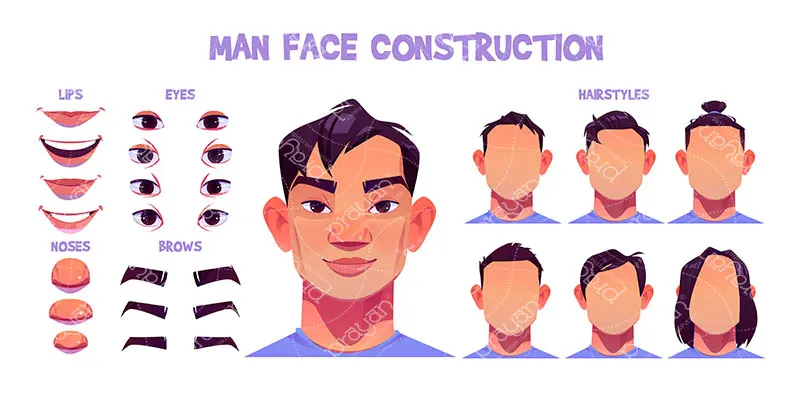
Head
As we mentioned above, the size and shape of a head often determine the intellectual ability of a character. However, not only the size but the shape of the head is important. The principle is simple – the head is a container for the brain. The smaller the container is the less content it has. Therefore goofy or stupid characters, cowards, or narrow-minded antagonists usually have thinner heads, pointy at the top.
Nose
The most noticeable face part, the nose is always an instrument to make a character recognizable, funny, or translate his mood. For example, Disney princesses always have perfect out-of-the-rinoplasty noses. The more evil or dominant the character is, the edgier becomes his hose. And while female villains often get pointy witchy noses, evil males usually have square crooked noses. The more simple-hearted and funny the character is supposed to be, the bigger and rounder the nose gets.
Teeth
Another crucial expressive facial feature. The principle is similar to nose creation. Heroes and princesses always have Hollywood smiles. Cute and funny children either miss a tooth or have exaggerated teeth as a sign of goofiness and youth. The more revolting a character is supposed to be, the more pointy and frightening his smile.
Mouth
Expressions and movements can also be essential in reading body language. For example, chewing on the bottom lip may indicate that the individual is experiencing feelings of worry, fear, or insecurity. Smiling is perhaps one of the greatest body language signals, but smiles can also be interpreted in many ways.
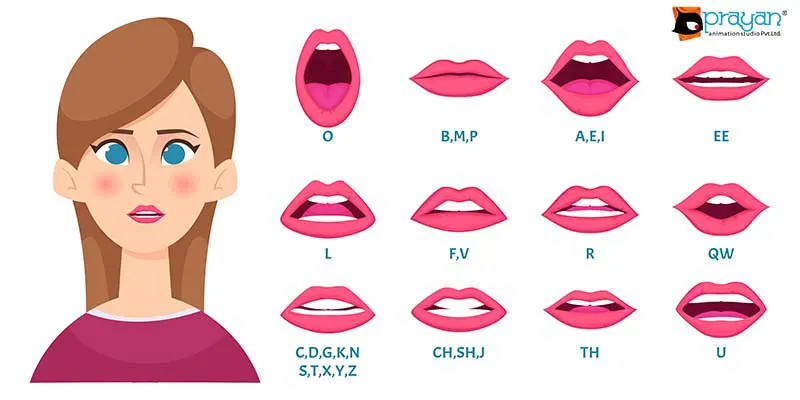
Shoulders
This is the fundamental application of the peer-body principle. The wider the shoulders are the more strong-willed the character. While will sometimes grow into dominant, exaggerated shoulders are often a sign of a bully or an aggressive character.
Chin
Another facial feature, mostly applicable to male characters, helps instantly create an impression. This principle of animation was widely adopted by the comic book industry, creating recognizable hero and villain images for decades. Positive, credible, masculine characters often have massive chins. However, their shape is also important as a good guy will always have softer and rounder features while a villain develops edgy, pointy, or square shapes. A no-chin character is usually a sidekick or a coward – a subordinate protagonist.
Rule of a peer
We shall return to this rule but regarding female characters mostly. Demonstrating the human body, a peer helps to create a soft feminine image. Therefore, the more approachable, cozy, and attractive the character is, the wider will be the bottom of the peer, creating an image of wider hips. This principle is most applicable to sweet old ladies, wise grandmothers, etc. However, the feminizing power of a pear-shaped body is pretty applicable when you want to create a goofy male character. And of course, it is essential for innocent and cuddly children.
Hair
In some cultures hair, length, style, colour, and shape determine a character. The principle of character expression through hair is usually the same as for other body parts – rich and bouncy are for positive and attractive characters. Edgy, and colorful express creative and daring natures. Thin, greasy, unhealthy hair is a true sign of an ill-minded character.
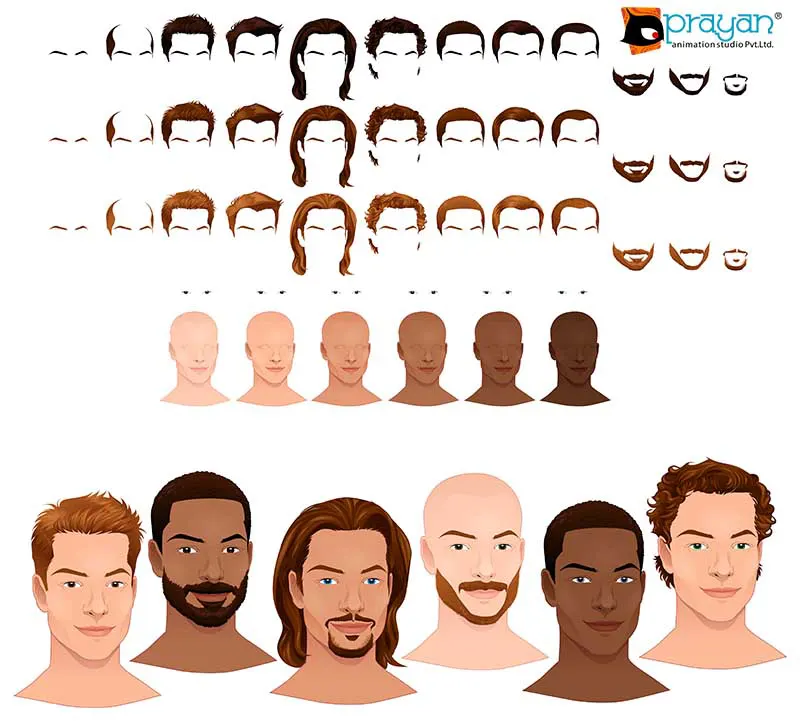
Generally, those are the principles that will have to create an impression from your cartoon character before it even becomes animated. Though they may look pretty restricted and stereotypic, there is a limitless field for imagination and creativity that helps various studios and artists all over the world create original and memorable characters.
Principles of Drawing Cartoon Scenery
The character you are creating has to exist in his universe. Whether you are drawing a realistic image or an exaggerated imaginative universe, certain principles determine how you will create the scenery or express weather conditions.
The background is not just an aquarium, where you put a character. It is a powerful tool that helps you counter a hero and justify his movements. Background also enhances a storyline. In case you are creating a commercial video or informative video content where an animated character acts as a narrator, background, and scenery will help you make it more credible and realistic.
There are certain principles to observe if you want to naturally integrate your characters into the scenery.
The same concept
Logically, a 2D character will look unnatural in 3D scenery. The same is true about the drawing technique and color palette. Although scenery should not absorb a character, making him unnoticeable, it is still important to create an impression that the hero and the scenery belong to the same universe.
Proportions
The scenery will determine whether your character is a tall guy or a shorty, looks massive or insignificant in the overall atmosphere. To develop proper proportions, start with the eye level of your character. The eye level will demonstrate how a hero sees the world and help a viewer to associate himself with the character while watching the video.
Laws of physics
Following Disney`s 12 principles of animation, even inanimate objects and natural phenomena fall under certain rules in cartoons. They justify a character`s behavior, movement, and plastic. That is why animation allows the schematic image of things that may even remain invisible in real life. The wind movement is expressed with thin lines, raindrops have a clear direction, and wet hair and clothes can be emphasized not only with darker colors, but schematic lining, showing the direction of the sprays.
While drawing cartoon characters and scenery it is important to understand that they will exist in the world with its laws of physics and atmosphere, but still have to seem plausible for a viewer. It means that despite the limitless field for imagination, it is important to follow certain patterns and principles that are common for various viewers from different cultures and locations. And just like an action calls for a reaction, making animated scenery and active participation in the storytelling, the whole image of every hero is a way to create his image and build the viewer`s attitude.
This pattern is most notable in Disney animation and comic-book character creations, which have shaped the basic image concepts for drawing all kinds of cartoons. With the rising significance of animated video content, cartoons have passed the barrier that limited it as a children-only industry. Today animated heroes help to sell, inform, recruit, and engage various internet users, prosperous customers, investors, and employees all over the world. With proper character traits, entourage, and performance, animator characters have the potential to shape the future of many industries.
In order for you to equip yourself with an animation of interest, simply contact us and we will have the best created for you that suits your purpose.


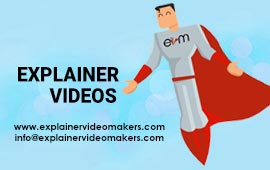
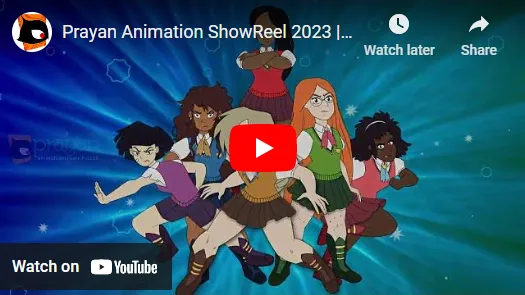
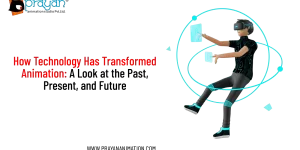
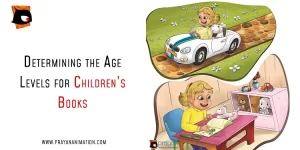
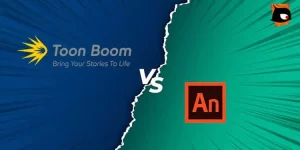
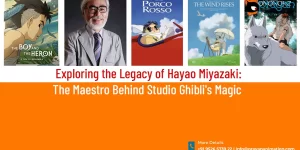

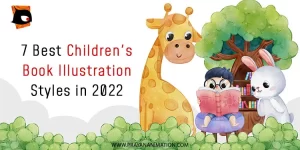
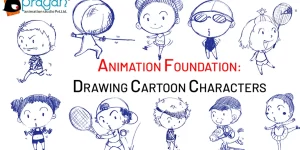
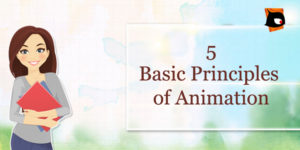


 We can help you.
We can help you. 

